Light Design in Home : Expert Tips and Strategies
Light design in home is a crucial aspect of interior design that can transform the look and feel of your living spaces. This comprehensive guide will explore the various facets of light design in home, from basic principles to advanced techniques.
Understanding the Basics of Home Lighting Design
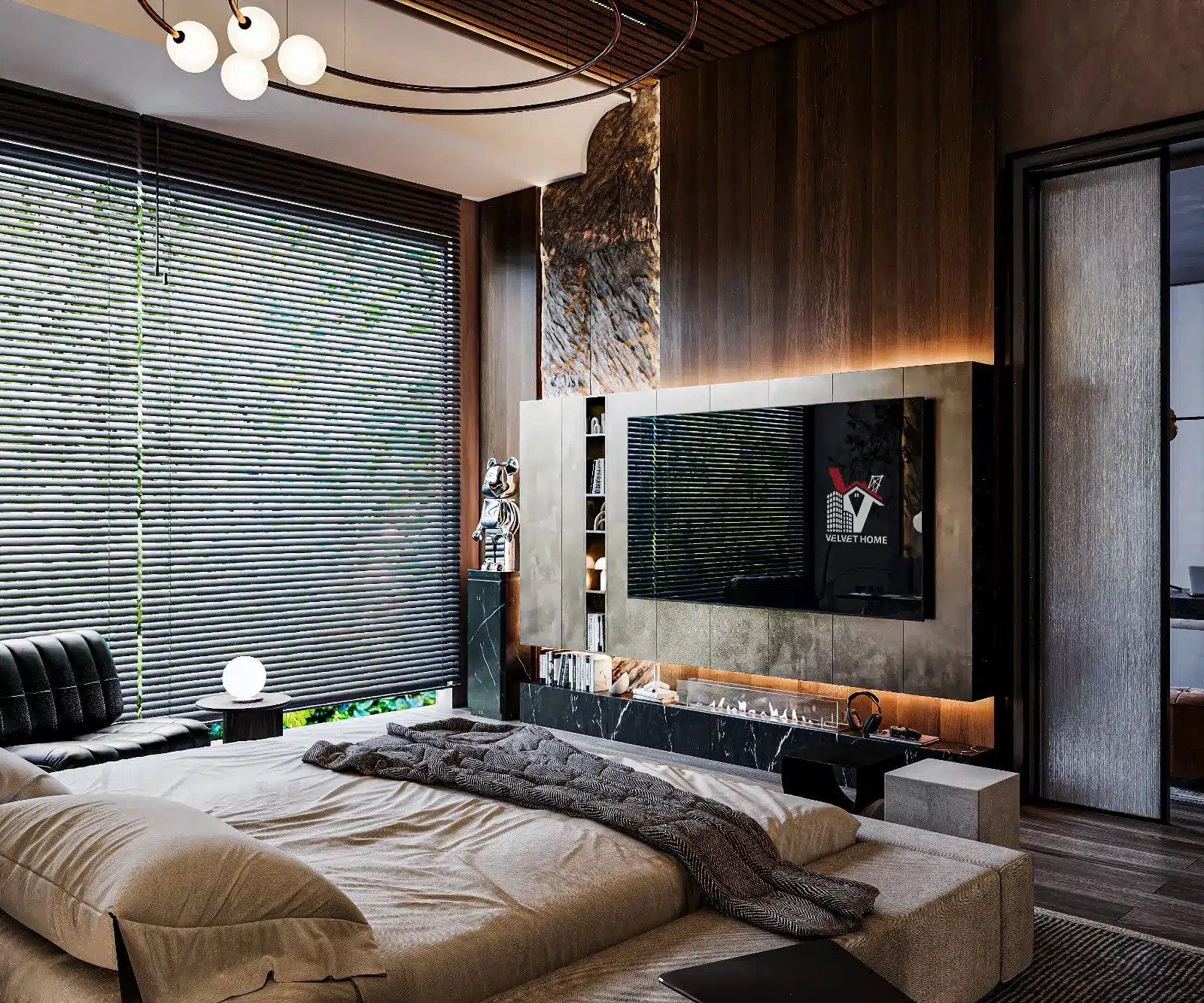
At its core, light design in home is about creating a harmonious balance between functionality and aesthetics. Effective light design in home considers three primary types of lighting:
- Ambient lighting: This provides overall illumination and sets the tone for the entire space.
- Task lighting: Focused light for specific activities like reading, cooking, or working.
- Spotlight the extraordinary: Elevate key elements with strategic illumination.
By skillfully combining these elements, you can create a layered lighting scheme that adapts to various needs and moods throughout the day.
The Impact of Lighting on Room Atmosphere
The way we perceive a room is inextricably linked to its lighting. Room lighting design, a key component of light design in home, plays a crucial role in defining spatial dimensions, creating focal points, and influencing our emotional response to an environment.
Consider how lighting can affect different rooms:
- Living Room: A mix of ambient and accent lighting can create a welcoming atmosphere for relaxation and socializing.
- Kitchen: Bright task lighting is essential for food preparation, while under-cabinet lights can add depth and functionality.
- Bedroom: Soft, dimmable lighting promotes relaxation and supports a healthy sleep-wake cycle.
- Home Office: Adjustable task lighting reduces eye strain and boosts productivity.
To learn more we advise you to read our article about The Art of Interior Design for Every Space
Innovative Approaches to Design with Lighting
Modern lighting technology has opened up exciting possibilities for design with lighting. LED strips, smart bulbs, and programmable systems allow for unprecedented control over color temperature, intensity, and even the direction of light. This flexibility enables homeowners to create dynamic lighting scenes that adapt to different times of day or activities.
Some innovative approaches to lighting room design include:
- Biodynamic lighting: Systems that mimic natural light patterns to support circadian rhythms.
- Light art installations: Using light as a medium for artistic expression within the home.
- Integrated architectural lighting: Seamlessly incorporating light sources into the structure of the home.
- Interactive lighting: Systems that respond to movement or voice commands.
Key Principles of Effective Home Lighting Design
To achieve a successful light design in home, consider these fundamental principles:
1. Layer Your Lighting
Layered luminescence: Blend light types for a dynamic, multifaceted environment.This layered approach allows you to adjust the atmosphere of a room to suit different activities and moods.
2. Consider Natural Light
Integrate natural light into your home lighting design. Strategically placed windows, skylights, and light tubes can dramatically reduce the need for artificial lighting during daylight hours.
3. Choose the Right Color Temperature
The color temperature of light, measured in Kelvin (K), can significantly impact the feel of a space:
- Golden glow mastery: Harness warm tones to craft an inviting, snug ambiance.
- Cool light (3500K-4100K): Promotes alertness and is ideal for task-oriented spaces.
- Daylight (5000K-6500K): Mimics natural sunlight and can enhance color accuracy.
4. Implement Dimming Controls
Dimmers offer flexibility, allowing you to adjust light levels to suit different times of day and activities. They also help conserve energy and extend bulb life.
5. Pay Attention to Shadows and Glare
Carefully position light sources to minimize harsh shadows and reduce glare on screens or reflective surfaces.
Room-by-Room Guide to Lighting in Home Design
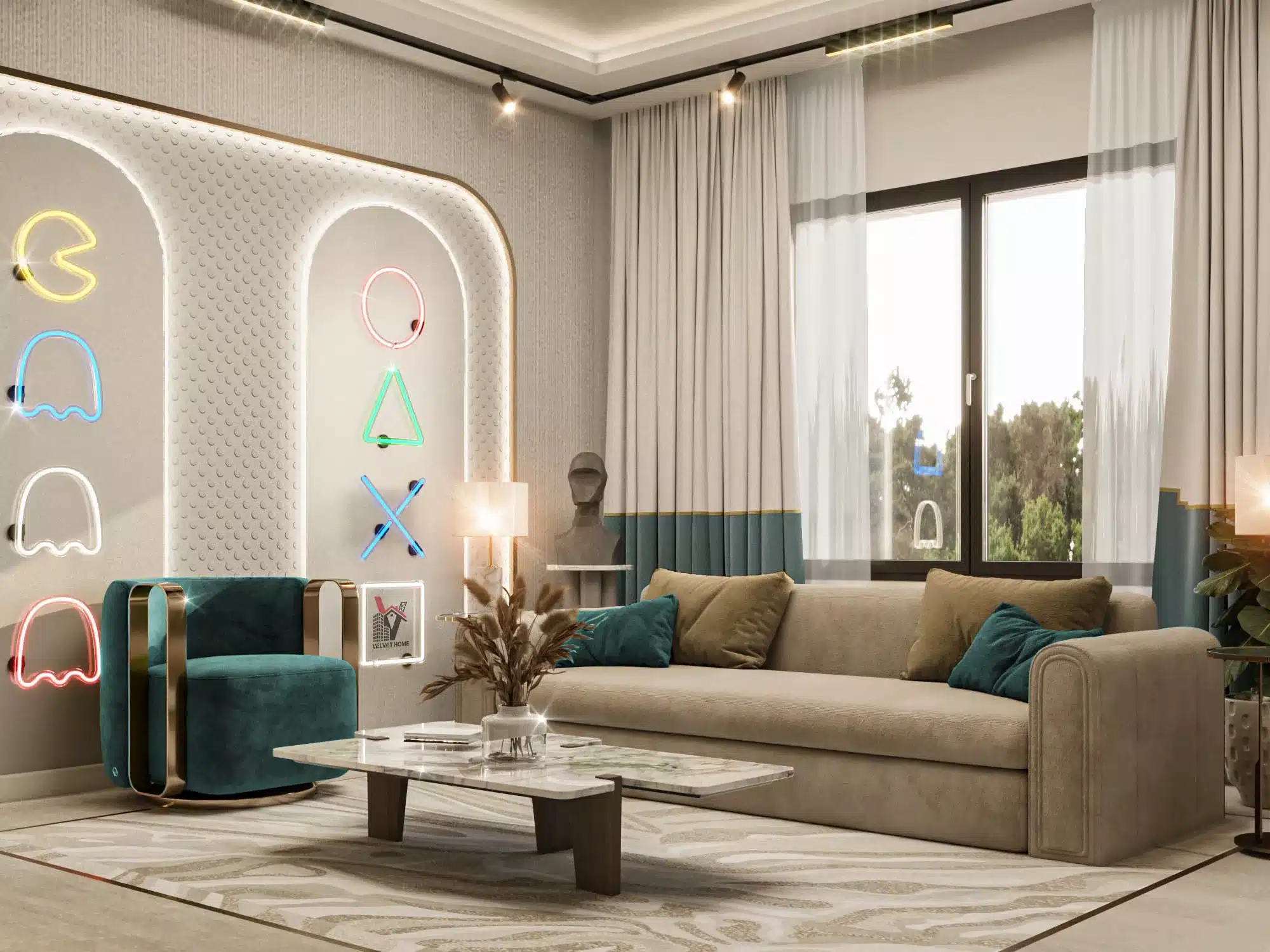
Let’s explore specific lighting strategies for different areas of the home:
Living Room Lighting
The living room often serves multiple purposes, from entertaining guests to quiet relaxation. A well-designed lighting scheme should be versatile enough to accommodate these varied uses.
- Ambient Lighting: Recessed ceiling lights or a central pendant can provide overall illumination.
- Task Lighting: Floor lamps or table lamps near seating areas for reading or hobbies.
- Accent Lighting: Wall sconces or picture lights to highlight artwork or architectural features.
Consider incorporating a mix of uplighting and downlighting to create a balanced, inviting atmosphere.
Kitchen Lighting
Effective kitchen lighting combines functionality with style, ensuring safe food preparation while also creating an inviting space for family gatherings.
- Ambient Lighting: Recessed lights or a central fixture for overall brightness.
- Task Lighting: Under-cabinet lights for countertop work areas and pendant lights over islands or dining areas.
- Accent Lighting: In-cabinet lighting to showcase glassware or decorative items.
Remember to include lighting inside pantries and above the sink for added functionality.
To learn more we advise you to read our article about Dubai Kitchen Design: Luxury and Modern Concepts
Bedroom Lighting
Bedroom lighting should promote relaxation while also providing adequate light for dressing and reading.
- Ambient Lighting: A central ceiling fixture or recessed lights on a dimmer switch.
- Focused illumination: Bedside beacons for nighttime narratives.
- Accent Lighting: Soft uplighting behind the headboard or gentle wash lighting on the walls.
Consider installing a dimmer switch to easily transition from bright light for getting ready to soft light for winding down.
Bathroom Lighting
Bathroom lighting needs to be functional for grooming tasks while also creating a spa-like atmosphere for relaxation.
- Ambient Lighting: Recessed ceiling lights or a central fixture.
- Task Lighting: Vanity lights on either side of the mirror to minimize shadows on the face.
- Accent Lighting: Subtle lighting in niches or under floating vanities for a luxurious touch.
Ensure the lighting is bright enough for tasks like shaving or applying makeup, but also dimmable for a relaxing bath.
Home Office Lighting
Proper lighting in a home office can significantly impact productivity and eye comfort.
- Ambient Lighting: Ceiling-mounted or recessed lights for overall illumination.
- Task Lighting: A adjustable desk lamp for focused work.
- Accent Lighting: Soft background lighting to reduce contrast and eye strain.
Position task lighting to minimize glare on computer screens and consider using daylight-mimicking bulbs to promote alertness.
For expert tips on designing your office and creating the perfect ambiance, check out our article on Innovative Solutions for Modern offices design
Outdoor Lighting as an Extension of Home Design
While focusing on interior spaces, don’t neglect the potential of outdoor lighting to enhance your home’s overall design.
- Pathway Lighting: Guide visitors safely while adding a decorative touch.
- Landscape Lighting: Highlight trees, shrubs, or architectural features.
- Security Lighting: Motion-sensor lights for added safety.
- Ambient Outdoor Lighting: String lights or lanterns for a cozy patio or deck area.
Well-designed outdoor lighting can extend your living space and create a welcoming entrance to your home.
To learn more we advise you to read our article about Modern Exterior Design for Homes
The Role of Technology in Modern Home Lighting Design
Advancements in technology have revolutionized the way we approach light design in home. Smart lighting systems offer unprecedented control and customization options:
- Programmable Scenes: Create and save lighting configurations for different activities or times of day.
- Voice Control: Adjust lighting hands-free using virtual assistants like Alexa or Google Home.
- Motion Sensors: Automate lighting in low-traffic areas for energy efficiency.
- Color-Changing Bulbs: Adjust the color temperature or hue to suit your mood or the time of day.
- Integration with Other Smart Home Systems: Coordinate lighting with thermostats, security systems, and entertainment devices for a fully connected home experience.
Sustainable Approaches to Home Lighting Design
As energy efficiency becomes increasingly important, consider these eco-friendly lighting strategies:
- LED Bulbs: Highly efficient and long-lasting, LEDs are the go-to choice for sustainable lighting.
- Natural Light Optimization: Design spaces to maximize daylight, reducing reliance on artificial lighting.
- Occupancy Sensors: Automatically turn lights off in unoccupied rooms.
- Timers and Daylight Sensors: Adjust outdoor lighting based on natural light levels.
- Energy Star Certified Fixtures: Choose light fixtures that meet energy efficiency standards.
Overcoming Common Challenges in Home Lighting Design
Even with careful planning, you may encounter some challenges in your lighting design journey:
- Low Ceilings: Use recessed lighting or flush-mount fixtures to maximize headroom.
- Limited Natural Light: Incorporate light-reflecting surfaces and consider light tubes or solar tubes.
- Open Floor Plans: Use lighting to define different functional areas within the space.
- Historic Homes: Balance modern lighting needs with period-appropriate fixtures.
- Budget Constraints: Prioritize key areas and invest in versatile, quality fixtures that can adapt to changing needs.
The Psychology of Light in Home Design
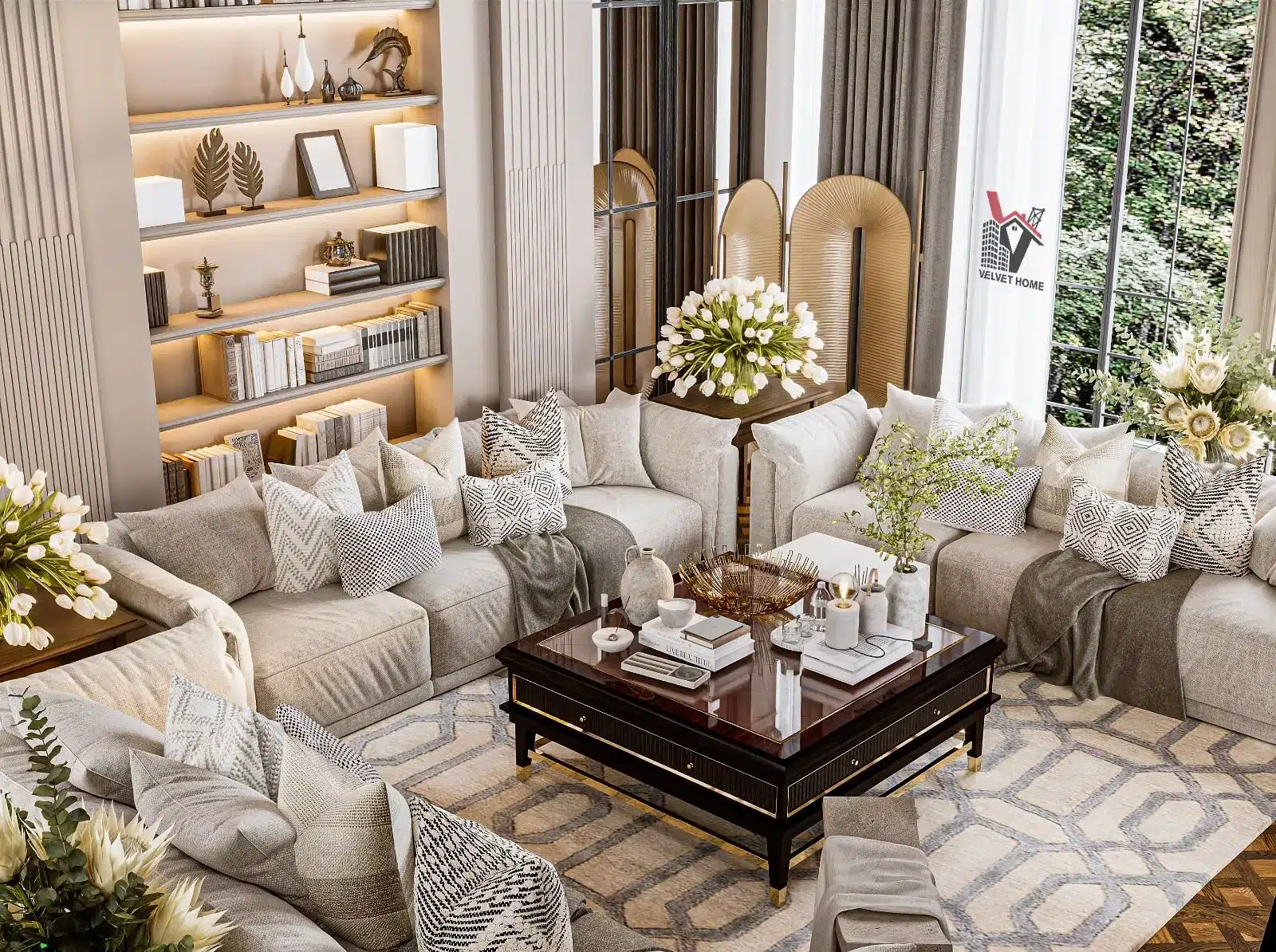
Understanding the psychological impact of lighting can help you create spaces that not only look good but feel good too:
- Bright Light: Increases alertness and can improve mood, especially beneficial in home offices or kitchens.
- Soft, Warm Light: Promotes relaxation and is ideal for bedrooms and living areas.
- Blue Light: Can disrupt sleep patterns if used excessively in the evening, consider using warmer tones as bedtime approaches.
- Contrast: High contrast between light and dark areas can create visual interest but may also cause eye strain if not balanced properly.
Trends in Home Lighting Design
Stay ahead of the curve with these emerging trends in light design in home:
- Minimalist Fixtures: Clean lines and simple designs that complement rather than dominate a space.
- Natural Materials: Light fixtures incorporating wood, stone, or organic shapes.
- Oversized Pendants: Statement pieces that serve as focal points in open-plan living areas.
- Vintage-Inspired LED Bulbs: Combining the aesthetics of Edison bulbs with modern LED efficiency.
- Sculptural Lighting: Fixtures that double as art pieces, blurring the line between functionality and decor.
DIY vs. Professional Home Lighting Design
While many aspects of home lighting design can be tackled as DIY projects, there are times when professional expertise can be invaluable:
DIY Lighting Projects:
- Replacing existing fixtures with new ones
- Installing dimmer switches
- Setting up smart bulbs and basic automation
- Creating simple accent lighting with plug-in fixtures
When to Consider a Professional:
- Complex electrical work requiring permits
- Whole-home lighting design plans
- Integration of advanced smart home systems
- Custom lighting solutions for unique architectural features
Advanced Techniques in Home Lighting Design
To further elevate your home lighting design, consider these advanced techniques:
1. Light Layering in Depth
While we’ve touched on the concept of layering lighting, let’s delve deeper into how this can be achieved:
- Foreground Lighting: This includes table lamps, floor lamps, and other sources at eye level or below. These create intimate zones and add visual interest.
- Midground Lighting: Wall sconces, pendant lights, and recessed lights at medium heights fall into this category. They provide general illumination and help define the room’s structure.
- Background Lighting: This includes cove lighting, uplighting, and other sources that illuminate walls and ceilings. They create a sense of depth and can make a room feel larger.
By carefully balancing these layers, you can create a rich, three-dimensional lighting scheme that adds depth and character to your space.
2. Color Rendering Index (CRI) in Light Design in Home
The Color Rendering Index is a measure of how accurately a light source reveals the colors of objects compared to natural light. For home lighting design, choosing bulbs with a high CRI (90 or above) can make a significant difference in how colors appear in your home, affecting everything from the appearance of your decor to how you look in the mirror.
3. Circadian Lighting
Circadian lighting systems go beyond simple color temperature adjustments. These advanced systems mimic the natural progression of daylight throughout the day, potentially improving sleep patterns, mood, and overall well-being. Consider implementing such a system in bedrooms or home offices for potential health benefits.
4. Lighting for Air Quality
Some cutting-edge lighting fixtures now incorporate air purification technology. These dual-purpose fixtures can help improve indoor air quality while providing illumination, making them an excellent choice for bedrooms, nurseries, or homes in urban areas.
Lighting Design for Special Purposes
Home Theater Lighting
Creating the perfect ambiance for your home theater requires careful consideration of lighting:
- Ambient Lighting: Use dimmable recessed lights or LED strips for a soft glow when the movie isn’t playing.
- Task Lighting: Install small, directional lights near seating for easy navigation without disturbing others.
- Accent Lighting: Use subtle lighting to highlight movie posters or architectural features.
- Screen Backlighting: Consider LED strips behind the screen to reduce eye strain during viewing.
Art Gallery Lighting
If you’re an art enthusiast, proper lighting can make your collection shine:
- Track Lighting: Adjustable track lights allow you to direct light precisely where it’s needed.
- Picture Lights: These fixtures mount directly above artwork for focused illumination.
- Wall Washers: Use these to create an even wash of light across a gallery wall.
- Color Temperature: Choose bulbs with a high CRI and a color temperature that complements your artwork (typically around 3000K-4000K).
Lighting for Plants
For indoor gardeners, the right lighting is crucial for plant health:
- Full-Spectrum LED Grow Lights: These provide the full range of light that plants need for photosynthesis.
- Adjustable Fixtures: Use articulating arms or adjustable pendants to direct light as plants grow.
- Timer Systems: Automate your plant lighting to ensure consistent light exposure.
Energy Efficiency and Cost Savings
Let’s delve deeper into how proper light design in home can lead to significant energy savings:
LED Technology Advancements in Light Design in Home
The latest LED bulbs offer even greater efficiency and features:
- Filament LEDs: These mimic the look of traditional incandescent bulbs while offering LED efficiency.
- Color-Changing LEDs: Adjust from cool to warm tones to suit different times of day or activities.
- Smart LEDs: These can be controlled via smartphone apps or voice assistants, allowing for precise scheduling and remote control.
Calculating Energy Savings in Light Design in Home
To understand the potential savings from efficient lighting design:
- Calculate your current lighting energy use (wattage × hours used per day × days per year ÷ 1000 = kWh per year).
- Estimate the energy use with LED replacements.
- Multiply the difference by your electricity rate to see potential yearly savings.
Many homeowners find that the initial investment in efficient lighting pays for itself within a few years through reduced energy bills.
Lighting Design for Small Spaces
Effective light design in home is particularly crucial in small spaces. Here are strategies to make compact areas feel larger and more inviting:
Vertical Emphasis in Light Design in Home
- Wall Sconces: Draw the eye upward, creating the illusion of height.
- Uplighting: Place lights on the floor, angled upwards to illuminate walls and ceilings.
Reflective Surfaces in Light Design in Home
- Reflective wizardry: Mirrors as space-expanding light multipliers.
- Glossy Finishes: Use high-gloss paint or reflective tiles to bounce light around the room.
Multi-Functional Lighting
- Shelf Lighting: Incorporate LED strips into shelving units for both task and accent lighting.
- Pendant Lights with Adjustable Heights: These can serve as both general and task lighting, adaptable to different needs.
Lighting and Home Automation
The integration of lighting with home automation systems offers unprecedented control and convenience:
Scene Setting in Light Design in Home
Create pre-programmed lighting scenes for different activities or times of day:
- “Movie Night”: Dims living room lights and activates bias lighting behind the TV.
- “Good Morning”: Gradually brightens bedroom and kitchen lights to ease you into the day.
- “Away”: Simulates occupancy when you’re on vacation by varying light patterns.
Geofencing in Light Design in Home
Use your smartphone’s location to trigger lighting actions:
- Lights turn on automatically when you approach home.
- All lights switch off when the last family member leaves the house.
Voice Control Integration
Integrate with virtual assistants for hands-free control:
- Voice-activated ambiance: “Google, set living room to twilight mode.”
- “Alexa, turn on the kitchen task lighting.”
Lighting for Wellness
Explore how light design in home can contribute to overall well-being:
Human-Centric Lighting
This approach focuses on aligning lighting with human biological needs:
- Morning: Bright, cool light to stimulate alertness.
- Midday: Neutral white light for maximum productivity.
- Evening: Warm, dim light to promote relaxation and prepare for sleep.
Light Therapy
Incorporate light therapy lamps in your home office or reading nook to combat seasonal affective disorder or jet lag.
Blue Light Management
Install apps on devices and use special bulbs to reduce blue light exposure in the evening, promoting better sleep.
Cultural Influences on Home Lighting Design
Light design in home often reflects cultural values and traditions:
Scandinavian Design
Emphasizes maximizing natural light and using warm, cozy artificial lighting to combat long, dark winters.
Japanese Influence
Incorporates soft, diffused light through shoji screens and emphasizes the interplay of light and shadow.
Middle Eastern Patterns
Uses intricate light fixtures that cast beautiful shadow patterns, adding visual interest and a sense of mystery.
Future Trends in Home Lighting Design
Illuminate the future: Embrace cutting-edge lighting innovations.
Li-Fi Technology
Light Fidelity (Li-Fi) uses light waves to transmit data, potentially allowing your lighting system to double as a wireless network.
Sustainable Materials
Eco-friendly fixtures made from recycled or biodegradable materials are gaining popularity.
Adaptive Lighting
Systems that automatically adjust based on occupancy, natural light levels, and even your mood (detected via smartphone data) are on the horizon.
Lighting Design for Different Architectural Styles
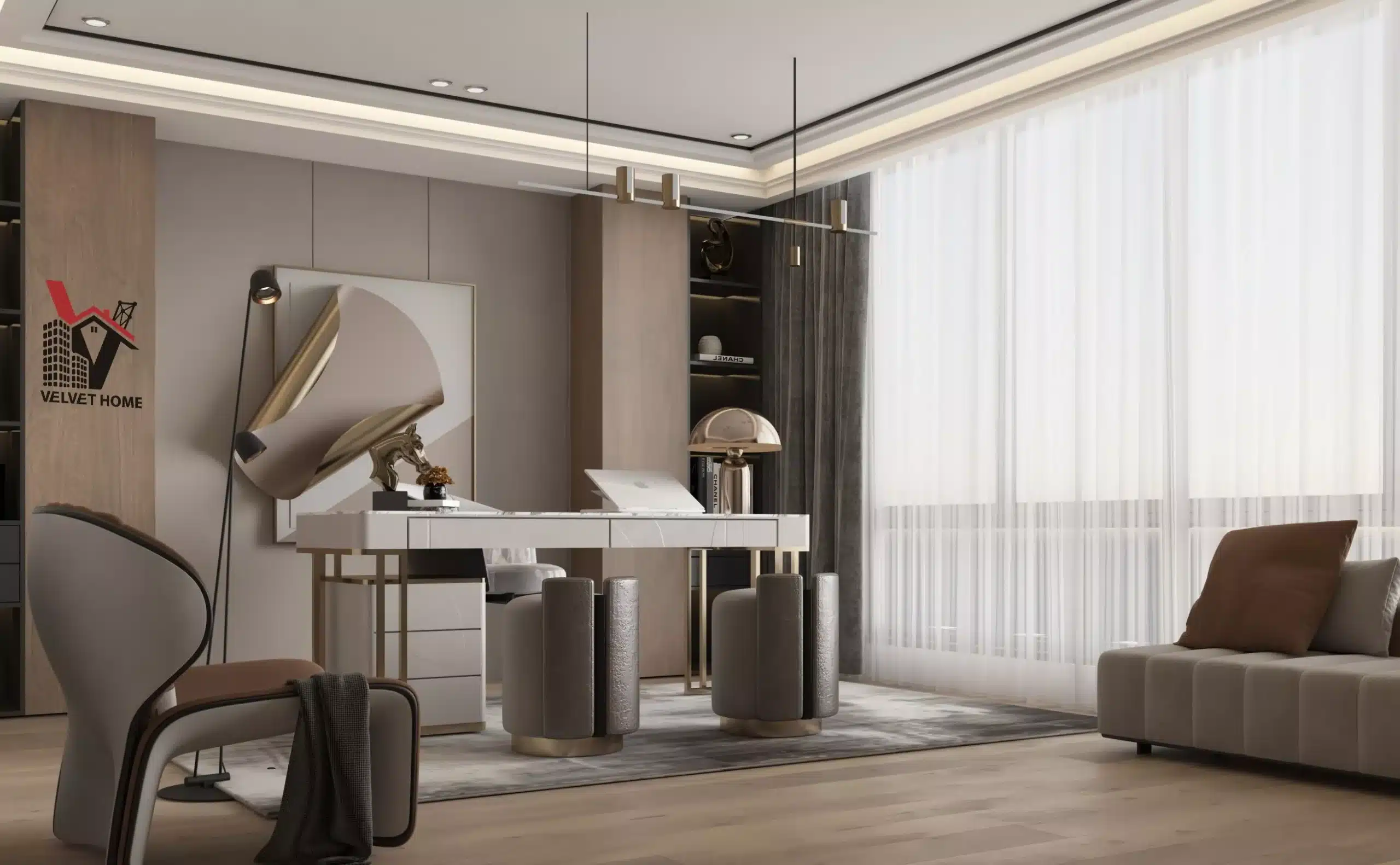
Tailoring your light design in home to complement your home’s architectural style can enhance its overall aesthetic:
Modern and Minimalist
- Clean lines and geometric shapes in light fixtures
- Recessed lighting for a sleek, uncluttered look
- LED strips for subtle, architectural lighting
Traditional and Classic
- Chandeliers and ornate sconces as statement pieces
- Luminous embrace: Soft, warm glow for comforting sanctuaries.
- Table and floor lamps with classic shapes and materials
Industrial in Light Design in Home
- Exposed bulb fixtures and metal finishes
- Adjustable task lighting with articulated arms
- Repurposed vintage industrial fixtures as focal points
Mid-Century Modern
- Sputnik chandeliers and other iconic designs from the 1950s and 60s
- Globe pendants and table lamps
- Warm wood tones in light fixtures to complement furniture
Rustic and Farmhouse
- Wrought iron and distressed wood fixtures
- Warm, amber-toned lighting
- Lantern-style outdoor lighting
DIY Lighting Projects
For the hands-on homeowner, here are some DIY lighting projects to enhance your light design in home:
- Mason Jar Chandelier: Create a rustic-chic fixture using mason jars and Edison bulbs.
- Rope Light Word Art: Craft illuminated words or shapes using rope lights and a wooden board.
- Pendant Light Conversion Kit: Transform any shade or bowl into a stylish pendant light.
- Backlit Wall Art: Install LED strips behind canvas prints for a dramatic effect.
- Wine Bottle Lamp: Upcycle empty wine bottles into unique table lamps.
Remember to prioritize safety and consult a professional for any projects involving electrical work.
Lighting Design for Outdoor Spaces
Extend your home’s ambiance to the outdoors with these lighting strategies:
Patio and Deck Lighting
- String lights for a festive atmosphere
- Recessed deck lights for safe navigation
- Adjustable spotlights to highlight outdoor dining or seating areas
Landscape Lighting
- Uplights to showcase trees and architectural features
- Path lights for safe walkways
- Submersible lights for water features
Security Lighting
- Motion-sensor flood lights for deterring intruders
- Dusk-to-dawn lighting for consistent illumination
- Smart outdoor lighting that can be controlled remotely
Professional Lighting Design Services
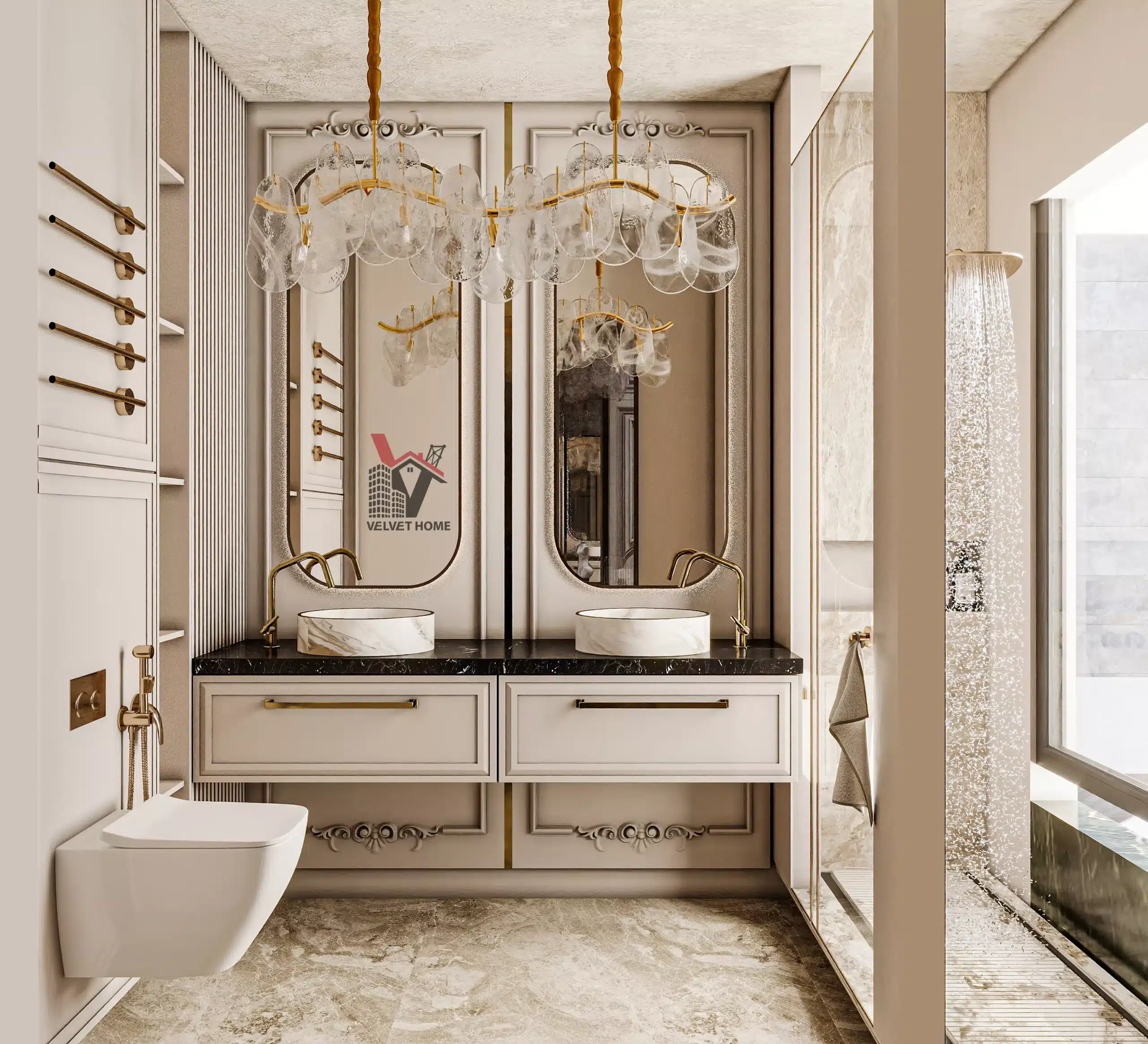
While DIY can be rewarding, sometimes it’s best to consult a professional. Here’s what to expect when working with a lighting designer:
- Vision mapping: Align illumination with style and wallet.
- Site Evaluation: The designer assesses your space and existing electrical setup.
- Design Proposal: Receive a comprehensive lighting plan, including fixture selections and placement.
- Implementation: The designer works with electricians and contractors to bring the plan to life.
- Fine-Tuning: Adjust and optimize the lighting once installed.
Lighting Design for Vacation Homes
Vacation homes present unique challenges and opportunities for light design in home:
Smart Home Integration
- Use smart lighting systems that can be controlled remotely to manage your home while you’re away.
- Set up “vacation modes” that simulate occupancy to deter burglars.
Low Maintenance Solutions
- Choose durable, weather-resistant fixtures for coastal or mountain properties.
- Opt for long-lasting LED bulbs to reduce the need for frequent replacements.
Indoor-Outdoor Flow
- Create seamless transitions between indoor and outdoor spaces with consistent lighting themes.
- Use similar color temperatures and fixture styles to unify the design.
Lighting for Home Staging and Real Estate Photography
Proper lighting can significantly impact the sale of a home:
Home Staging of Light Design in Home
- Radiance check: Verify every fixture’s cleanliness and performance.
- Use warm, inviting light in living spaces and bedrooms.
- Highlight architectural features with accent lighting.
Real Estate Photography of Light Design in Home
- Sunlight symphony: Unveil windows for nature’s luminous embrace..
- Use supplementary lighting to balance shadows and highlight key features.
- Consider twilight shots to showcase both interior and exterior lighting.
Seasonal Lighting Considerations
Adapt your home’s lighting to complement each season:
Summer
- Emphasize outdoor lighting for evening entertaining.
- Use cooler color temperatures indoors to create a refreshing atmosphere.
Fall
- Incorporate warm, amber tones to create a cozy ambiance.
- Add table lamps and floor lamps to combat earlier sunsets.
Winter
- Increase overall light levels to counteract shorter days.
- Use timers to ensure a welcoming atmosphere when returning home in the dark.
Spring
- Gradually shift to cooler, brighter lights to energize spaces.
- Crystal-clear brilliance: Polished surfaces amplify daylight’s reach.
Lighting Design for Home-Based Businesses
With more people working from home, consider these lighting strategies for home offices and creative spaces:
Video Conference Lighting
- Position key lights at 45-degree angles to illuminate your face evenly.
- Use a backlight to separate yourself from the background.
- Invest in adjustable lighting that can be fine-tuned for different times of day.
Creative Workspaces in Light Design in Home
- Install adjustable task lighting for detailed work.
- Use full-spectrum bulbs to ensure accurate color rendering.
- Incorporate indirect lighting to reduce glare on computer screens.
Velvet Home: Your Partner in Exquisite Home Lighting Design
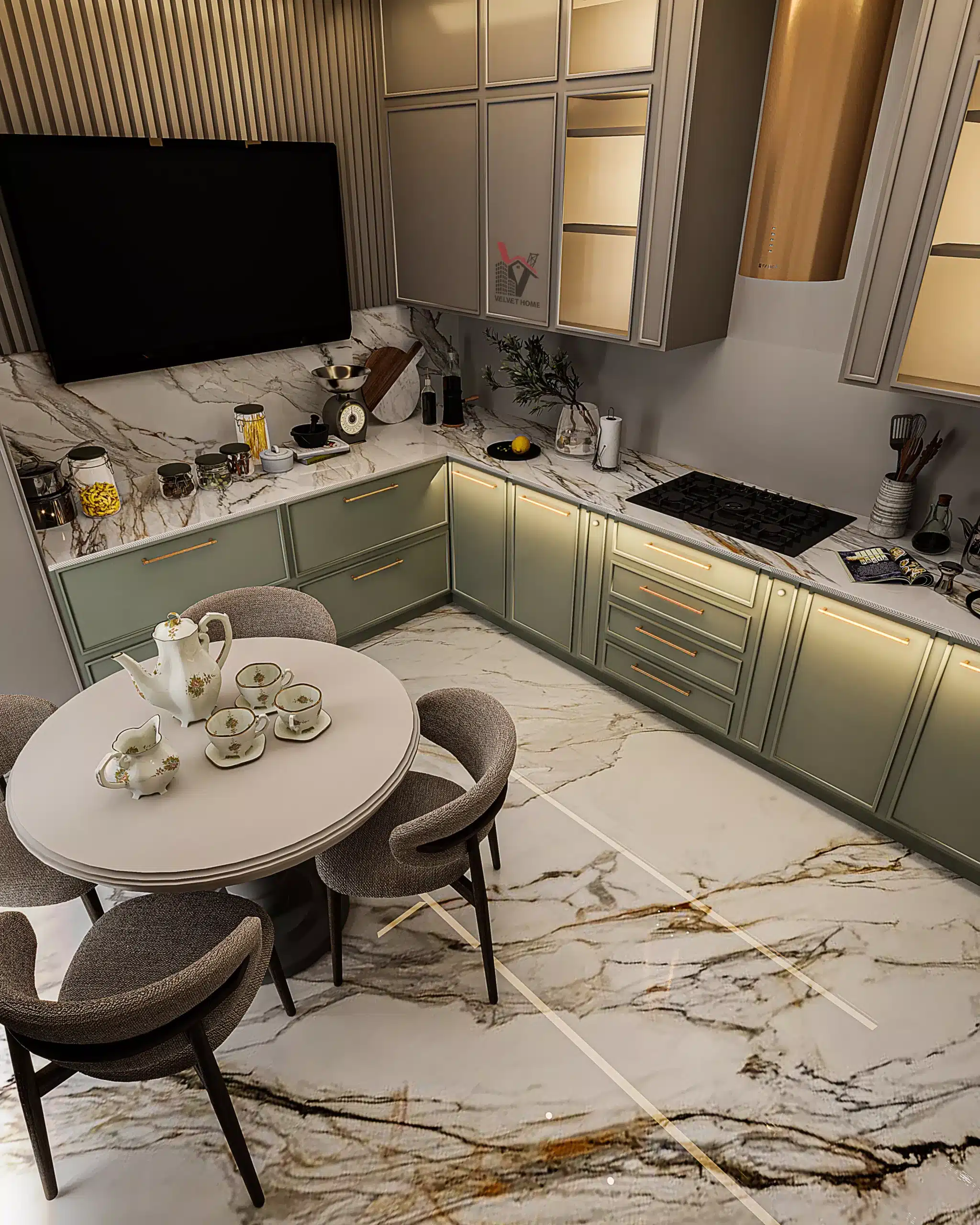
When it comes to creating the perfect light design in home, Velvet Home stands out as a premier choice for discerning homeowners in the UAE. With a deep understanding of both local architectural styles and international design trends, Velvet Home offers bespoke lighting solutions that transform houses into extraordinary living spaces.
Why Choose Velvet Home for Your Light Design in Home Needs?
- Expertise in UAE Architecture: Velvet Home’s designers are well-versed in the unique architectural styles prevalent in the UAE, from traditional Arabic designs to ultra-modern urban apartments.
- Comprehensive Design Services: From initial consultation to final installation, Velvet Home provides end-to-end services, ensuring a seamless and stress-free experience in your light design in home project.
- Cutting-Edge Technology: Leveraging the latest in LED and smart home technology, Velvet Home creates lighting systems that are both beautiful and energy-efficient.
- Customization: Every light design in home project is tailored to the client’s specific needs, preferences, and lifestyle, resulting in truly personalized lighting solutions.
- Quality and Luxury: Velvet Home partners with top-tier lighting manufacturers, offering a curated selection of high-end fixtures that combine functionality with exquisite design.
- Sustainable Approaches: With a focus on energy-efficient solutions, Velvet Home helps clients reduce their carbon footprint without compromising on style or functionality in their light design in home.
- Holistic Interior Design: Beyond lighting, Velvet Home offers comprehensive interior design services, ensuring that your light design in home integrates seamlessly with your overall decor.
Whether you’re looking to refresh a single room or undertake a complete home renovation, Velvet Home’s lighting design experts are ready to illuminate your space with creativity, sophistication, and technical excellence.
To calculate the cost or request a design, we have provided a website that makes the process easy for you. You can visit it here.
FAQs
Which light is good for home?
The best light for homes is often a combination of different types. LED lights are energy-efficient and long-lasting. Warm white LEDs (2700-3000K) create a cozy atmosphere, while cool white LEDs (3500-4100K) are good for task lighting.
What is the best lighting for a house? The best lighting for a house incorporates layered lighting: ambient (general illumination), task (focused light for activities), and accent (highlight specific features). A mix of natural light, overhead fixtures, lamps, and directional lights creates a well-balanced lighting scheme.
What are the 4 types of lights in home decor?
The four main types of lights in home decor are:
- Ambient lighting: General illumination (ceiling lights, chandeliers)
- Task lighting: Focused light for specific activities (desk lamps, under-cabinet lights)
- Accent lighting: Highlights features or creates atmosphere (wall sconces, picture lights)
- Decorative lighting: Serves as a design element (pendant lights, statement fixtures)
How to design lights in a room?
To design lights in a room:
- Start with ambient lighting for overall illumination
- Add task lighting in work areas (kitchen, office, reading nooks)
- Use accent lighting to highlight artwork or architectural features
- Consider natural light sources and complement them
- Choose fixtures that match the room’s style and scale
- Install dimmer switches for flexibility
How do you design a lighting layout?
To design a lighting layout:
- Assess the room’s purpose and natural light sources
- Create a floor plan and mark activity areas
- Plan ambient lighting first (e.g., recessed lights or central fixtures)
- Add task lighting for specific functions (reading, cooking, etc.)
- Include accent lighting to create depth and highlight features
- Consider the ceiling height and room dimensions
- Choose appropriate fixtures and bulb types
- Ensure even light distribution and avoid harsh shadows
- Include controls like dimmers or smart lighting systems
Conclusion: Illuminating Your Path to Perfect Home Lighting
Light design in home is a multifaceted discipline that combines art, science, and technology. By understanding the principles of good lighting design and applying them thoughtfully to each space in your home, you can create environments that are not only visually stunning but also functional and comfortable.
Remember that lighting is dynamic – it should adapt to your changing needs throughout the day and as your lifestyle evolves. Don’t be afraid to experiment with different lighting solutions and to update your design as new technologies and trends emerge.
Ultimately, the goal of home lighting design is to enhance your daily life, creating spaces that support your activities, reflect your personal style, and make you feel at home. With the knowledge gained from this guide, you’re well-equipped to embark on your own lighting design journey, illuminating your path to a beautifully lit home.
Whether you’re tackling a full home renovation or simply looking to refresh a single room, remember that good lighting is the key to bringing your design vision to life. So, take the time to plan your lighting carefully, considering both the practical and aesthetic aspects of each decision. Your perfectly lit home awaits!







[…] To learn more we advise you to read our article about Light Design […]
[…] To learn more we advise you to read our article about Light Design in Home: Expert Tips and Strategies […]
[…] To learn more we advise you to read our article about Light Design […]
[…] To learn more we advise you to read our article about Light Design […]
[…] To learn more we advise you to read our article about Light Design in Home: Expert Tips and Strategies […]
[…] To learn more we advise you to read our article about Light Design in Home: Expert Tips and Strategies […]
[…] To learn more we advise you to read our article about Light Design in Home: Expert Tips and Strategies […]
[…] To learn more we advise you to read our article about Light Design in Home: Expert Tips and Strategies […]
[…] To learn more we advise you to read our article about Light Design in Home: Expert Tips and Strategies […]
[…] To learn more we advise you to read our article about Light Design in Home: Expert Tips and Strategies […]
[…] To learn more we advise you to read our article about Light Design in Home: Expert Tips and Strategies […]
[…] To learn more we advise you to read our article about Light Design in Home […]
[…] o learn more we advise you to read our article about Light Design in Home […]
[…] To learn more we advise you to read our article about Light Design in Home: Expert Tips and Strategies […]